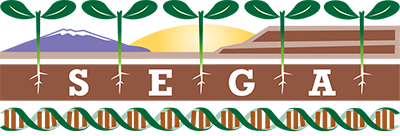You are here
A geographic mosaic of genetic variation within a foundation tree species and its community-level consequences.
Publication Type:
Journal ArticleSource:
Ecology, Volume 90, Issue 7, p.1762 - 72 (2009)ISBN:
0012-9658URL:
http://www.ncbi.nlm.nih.gov/sites/entrez?Db=pubmed&DbFrom=pubmed&Cmd=Link&LinkName=pubmed_pubmed&LinkReadableName=Related%20Articles&IdsFromResult=19694126&ordinalpos=3&itool=EntrezSystem2.PEntrez.Pubmed.Pubmed_ResultsPanel.Pubmed_RVDocSumhttp://www.ncbi.Keywords:
Animals, Australia, Biological Evolution, Demography, Ecosystem, Eucalyptus, Fungi, Genetic Variation, InsectaAbstract:
<p>Knowledge of the manner in which genetic variation within a tree species affects associated communities and ecosystem processes across its entire range is important for understanding how geographic mosaics of genetic interactions might develop and support different communities. While numerous studies have investigated the community and ecosystem consequences of genetic variation at the hybrid cross type or genotype level within a species, none has investigated the community-level effects of intraspecific genetic variation across the geographic range of a widespread species. This is the scale at which geographic mosaics of coevolution are hypothesized to exist. Studies at this level are particularly important for foundation tree species, which typically support numerous microbial, fungal, plant, and animal communities. We studied genetic variation across eight geographical races of the forest tree Eucalyptus globulus representing its natural distribution across southeastern Australia. The study was conducted in a 15-year-old common garden trial based on families derived from single-tree open-pollinated seed collections from the wild. Neutral molecular genetic variation within E. globulus was also assessed and compared with genetic divergence in the phenotypic and community traits. Three major findings emerged. First, we found significant genetically based, hierarchical variation in associated communities corresponding to geographical races of E. globulus and families within races. Second, divergence in foliar communities at the racial level was associated with genetically based divergence in specific leaf morphological and chemical traits that have known defensive functions. Third, significant positive correlations between canopy community dissimilarity and both neutral molecular genetic and leaf quantitative genetic dissimilarity at the race level supported a genetic similarity rule. Our results argue that genetic variation within foundation tree species has the potential to be a significant driver of the geographical mosaics of variation typical of forest communities, which could have important ecological and evolutionary implications.</p>
- Log in to post comments
- Google Scholar
- RTF
- EndNote XML
- RIS
Theme by Danetsoft and Danang Probo Sayekti inspired by Maksimer
